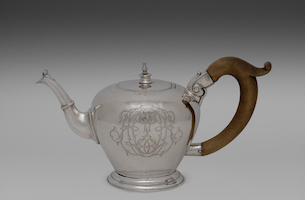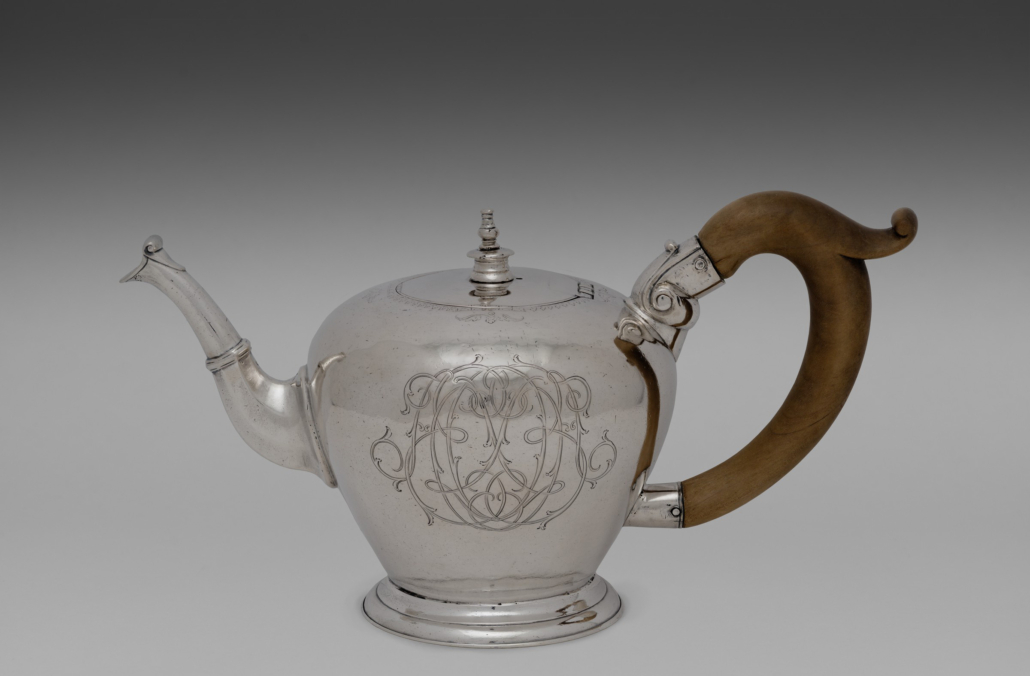
CAMBRIDGE, Mass. – The Harvard Art Museums have received a gift of 21 works of 18th-century American silver from the collection of Daniel A. Pollack and Susan F. Pollack. The gift comprises a range of vessels and table implements intended for domestic use, including cups, bowls, spoons, tankards and teapots crafted by noted silversmiths from Boston, New York and Philadelphia.
There is also a stunning caudle cup, an example of ecclesiastical silver made by Edward Winslow and believed to have been used during communion at the First Congregational Church in Milford, Connecticut. The Pollacks’ gift strengthens the museums’ holdings of 17th- to 20th-century silver and comes at a time when curators and postdoctoral fellows are working to reimagine the balance among paintings, sculptures and design objects on view in the galleries.
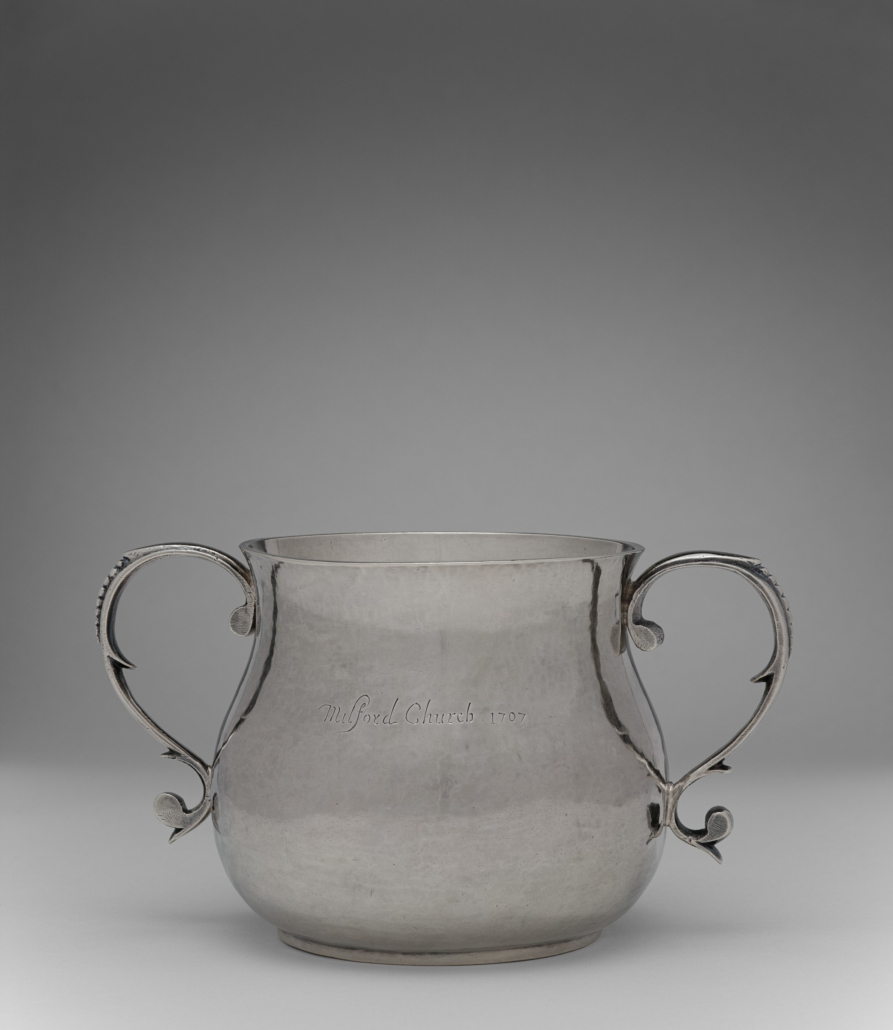
“The story of silver is in many ways a story of the Americas. Like other commodities such as coffee, mahogany, sugar and tea, silver helps us unite the known world of the 16th century with our own time,” said Horace D. Ballard, the Theodore E. Stebbins Jr. associate curator of American art at the Harvard Art Museums. “The Pollacks’ generosity allows us to more fully engage the capacious and complex story of European privilege and Afro- and indigenous labor across the Spanish-occupied Americas and British North America during the age of colonialization. It is estimated that 50 to 80 percent of the world’s silver from the 16th to early 19th century came from the infamous silver mines of Potosi in the Viceroyalty of Peru. Silver ore was shipped to China from America’s primary Pacific port in Peru; traded to Europe along with porcelain; melted into coin, plate or brick; and then traded back to the Americas through the eastern seaboard ports of the Atlantic coast, to be molded, designed and sold to merchants, religious institutions and wealthy families. Works by American silversmiths of the 18th and 19th centuries are noted for their innovative silhouettes, turnings and naturalistic allusions to animals and plants. The Pollack gift and its upcoming installations in our galleries will foreground this global orientation around luxury, leading us to ask new questions about hemispheric identity and aesthetic legacy.”
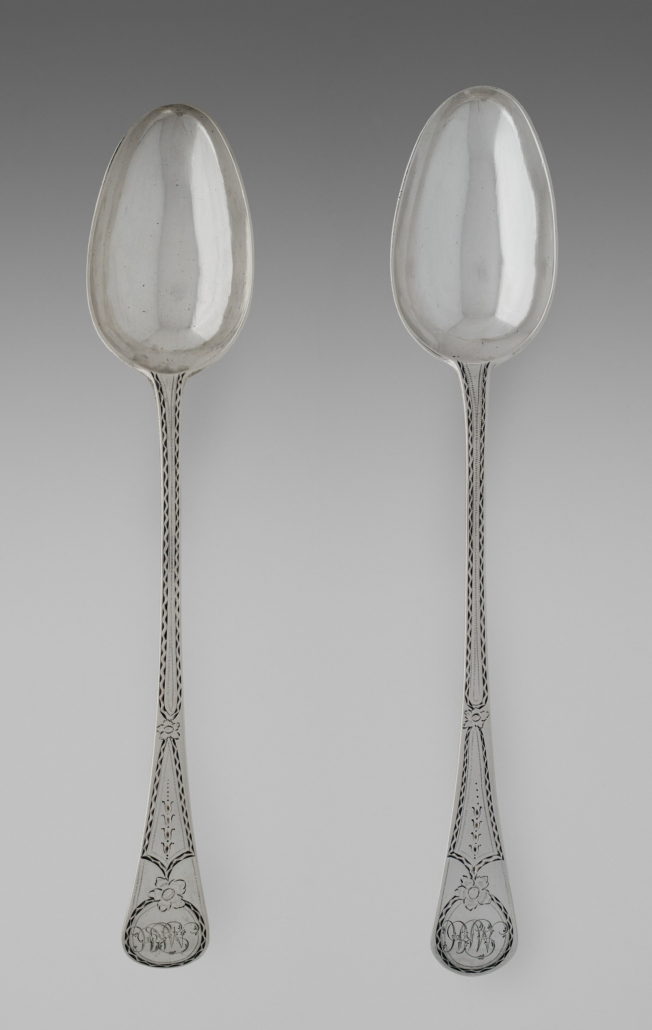
Highlights of the gift include, from Boston-based silversmiths, a pair of ragout (serving) spoons from 1786 by Paul Revere, Jr., and a circa-1765 rococo-style cream jug and circa-1775 porringer (small bowl) with a keyhole-pattern handle by Benjamin Burt; a soup ladle with a shell-shaped bowl from circa 1772 and a waiter (small salver) from circa 1765 by the pioneering Jewish silversmith and philanthropist Myer Myers of New York; and an apple-shaped teapot from circa 1745 by Joseph Richardson, Sr., for prominent Quakers Hannah and William Logan, as well as a coffeepot by Richardson’s sons, Joseph Jr. and Nathaniel, both of whom trained with their father in Philadelphia. These are the first works by the Richardsons to enter the museums’ collections. The earliest object from the gift is the aforementioned caudle cup from 1707 by Edward Winslow of Boston.
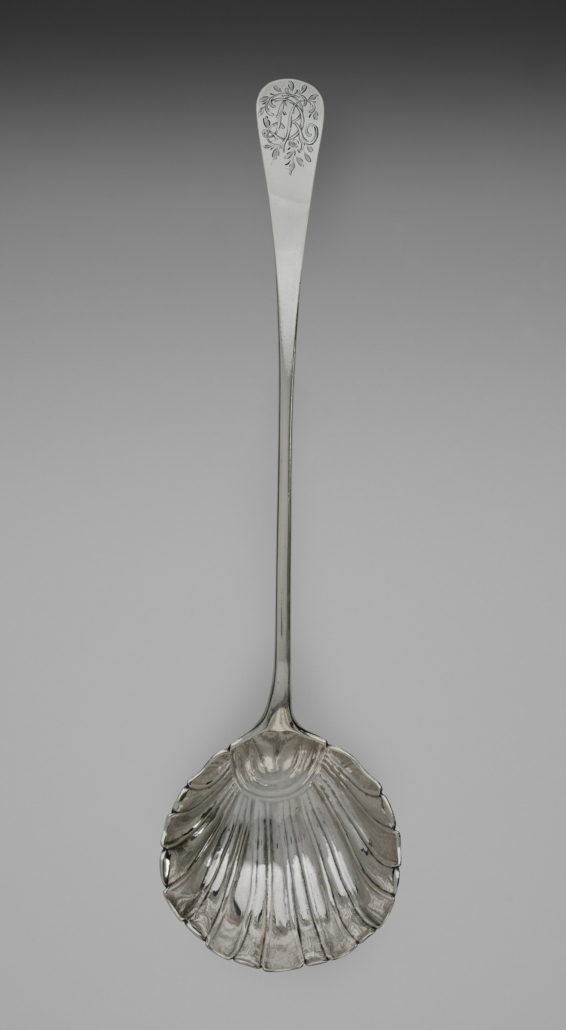
During the next six months, select objects from the Pollack gift will be installed in galleries on Level 2 of the museums. By mid-March, the Winslow caudle cup and the Myers soup ladle, among other objects, will be installed in the silver cabinet. By mid-May, the case featuring design objects in the museums’ Atlantic World gallery will highlight a two-handled silver punch strainer designed in the 1760s by Daniel Parker of Boston. By late July, the Pollack Arcade gallery on the second floor will host a case of 14 objects from the gift. Interpretive labels for the case will address Daniel Pollack’s longstanding commitment to American art at the Harvard Art Museums while also foregrounding the global threads of racialized labor and colonial trade at the heart of America’s colonization and its emergence as a nation.
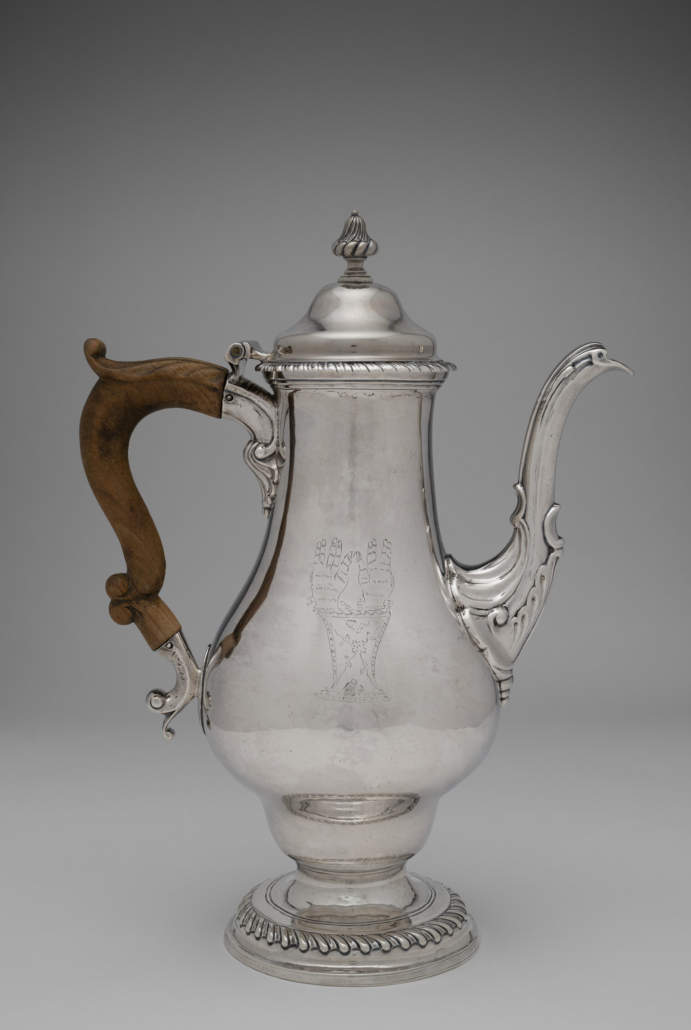
This gift of silver follows Daniel Pollack’s passing in October 2019 and builds upon a number of other significant gifts and generous support from the Pollacks during the last 17 years. An ardent supporter of the museums, Daniel was a member of the Director’s Advisory Council and served as chair of the American Art Curatorial Committee. The couple’s commitment also includes contributions toward the renovation and expansion of the Harvard Art Museums (which reopened in the fall of 2014) as well as the naming of four arcade galleries on the second floor overlooking the Calderwood Courtyard.
About the Harvard Art Museums
The Harvard Art Museums house one of the largest and most renowned art collections in the United States, comprising three museums (the Fogg, Busch-Reisinger, and Arthur M. Sackler Museums) and four research centers (the Straus Center for Conservation and Technical Studies, the Center for the Technical Study of Modern Art, the Harvard Art Museums Archives, and the Archaeological Exploration of Sardis).
For information about visiting, including important COVID-19 policies, see harvardartmuseums.org/visit.


